As the need for success dominated the psyche of factory teams, attention turned to keeping the power on the ground…
Words: Norm DeWitt Pics: Terry Good
For 1972 the American Trans-Am series had been utterly dominated by Ake Johnsson on his Maico 400, the new radial fin model. It was a good time to be at Maico, although that result may have flattered to deceive as DeCoster’s factory Suzuki that had won the world championships in 1971 and 1972 wasn’t being used in the American races.
However, in the last six GPs of 1972, Ake had two wins and four second places.
Another major contributing factor to benefit Maico was the new weight limit of 209lb for the 1973 GP season, taking away much of the Suzuki’s weight advantage from the previous few seasons.
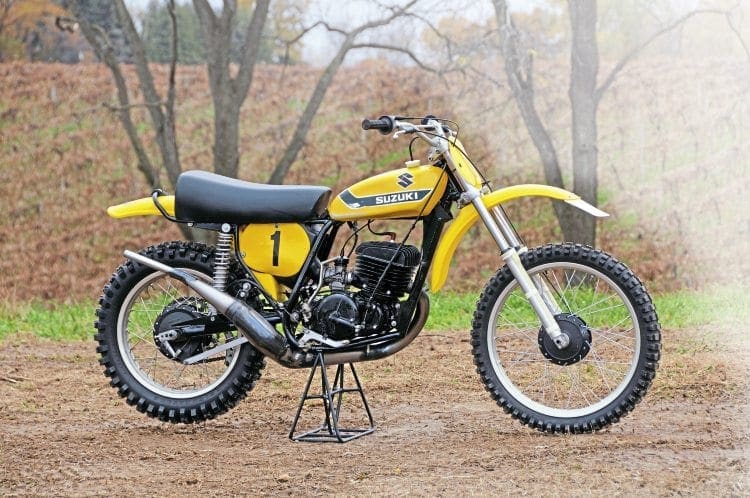
John Banks was even back on a four-stroke… the Cheney BSA, as the BSA-based machines could now meet the minimum weight. Maico was now in a perfect position to bring the fight to Suzuki for the coming season.
Gerrit Wolsink had won the first race of the 1973 season overall on the factory Maico, which was similar in spec to the Ake Johnsson machine of 1972.
However, for the first four Grands Prix, DeCoster continued to build up his points lead with victories in four of the eight motos.
What nobody expected was a major technological advance that was about to change the design of MX machines forever.
There are many conflicting accounts as to the true source of the idea that changed MX suspension design forever, this version comes from within the Maico team itself, the team who first arrived at a Grand Prix with the design on their bikes.
Yamaha had led the charge with the new monoshock design that was introduced early in the 1973 season.
It really wasn’t anything particularly new, as manufacturers such as Vincent had used a similar concept in the past, and even Suzuki had tried out the monoshock design for their MX racers before deciding to pass on it. It was Maico that noted what the true advantage was.
The debut of the long travel Maico came at the Czech Grand Prix, the 5th round of the season. Gerrit said: “I was one of the first to have a long travel motorcycle, me and (team-mate) Willy Bauer.
The funny part is that it was a mechanic at Maico who found the solution, and not one of the engineers at the factory.
That’s how it mostly works in those small companies, not the race mechanics… it was the mechanics at the factory that knew the testers, and they also made the progress in the bikes.
Adolf Weil was riding 250 GPs and Hakan Andersson had the Yamaha monoshock. Everybody saw that you needed the monoshock to have good suspension. Then this mechanic said ‘it’s not the monoshock, it’s the travel that makes the difference’.”
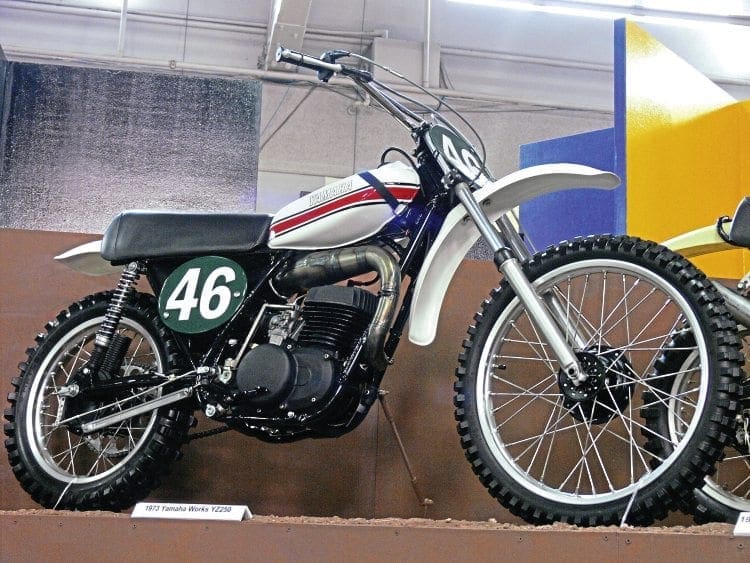
This was a common misconception about the monoshock design, which was thought superior primarily because it transferred the forces directly to the steering head area of the frame.
Wolsink said: “They (Maico) found out how to make the travel at the rear end, and that was simply to move the shock forward, it was the easiest way.
“Of course, you didn’t have the right springs… didn’t have the right shocks… but we used it as it made a huge difference in the riding. When I tried it the first time, I didn’t have a spare bike, I only had the long travel Maico. I rode on it but I didn’t want to drive on it, as it didn’t work, you know? But my lap times were seconds faster than the other bike, and it was a strange feeling.
And then it all started, the revolution of shocks, and oil tanks, and gas, and springs… because the springs would sag. The dangerous part of it was that the front forks didn’t have enough travel in those days, so we made the front forks longer.
Then they developed the front forks and it wasn’t until 1978 at Suzuki that we had it (sorted)…for four years they had been experimenting with all types of shocks and all types of front suspensions and every year it was different.”

1973 had been the beginning and between the solutions at Yamaha and Maico, the revolution was proceeding at full force, with the monoshock Yamaha debut earlier in the season. That sort of commitment was missing at Team Suzuki.
Roger DeCoster had been developing the Suzuki himself for much of 1973, as the factory had been angered by the new weight limits of 209lb aimed squarely at the featherweight Suzukis.
To bring his bike up to weight Roger had to fill the lower sections of the frame with lead. For the USGP the rear suspension of the bike was still largely unchanged, and yet DeCoster was still leading the world championship coming into Carlsbad.
Roger even had to move the shocks up himself later that summer. Roger DeCoster said: “We had problems in 1973, we could not get Japan to fix the problems with the suspension, as they got bummed out about the rule they made against Suzuki, as their bikes were lighter.
The European teams had lobbied strongly to change the rules.”
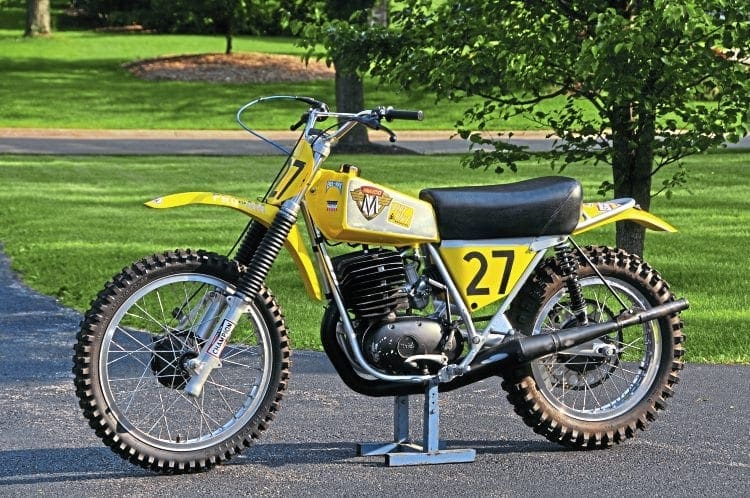
Sylvain Geboers was on the 250GP Suzuki: “If you wanted to do something mid-season to the bike, you had to do it yourself.” Wolsink: “Oh yeah, that’s for sure. Yeah, but you would do for yourself… I did things on the Suzuki myself (1974-79) and changed the geometry or whatever, we were always experimenting ourselves… and the factory was doing its things.
“But they couldn’t test in Japan, they were too small for the 500s. They didn’t have 500 riders, the Japanese. They only had Watanabe on the 125… the 250 was maximum for them, that’s why they needed us, the big guys for the 500s. All the testing was done by us.”
Wolsink also had the knowledge of being a factory Maico rider, and he brought all that to Suzuki for 1974. Wolsink: “Of course, the engine was very good too. Not so much rpm but a high torque engine, and I took those engine specifications to Suzuki.”
However, none of that information was available to DeCoster in 1973 and it was a frustration festival for the defending world champion, perhaps more so than in any other year. He compared the experience in the Grand Prix against riding for the US Suzuki team run by Merv Wright.
Roger said: “If the rider wants something on the bike, even if it doesn’t make sense, give it to him. If he is a winner, don’t even question it. Merv would say “If he wants a mashed potato sandwich strapped on his gas tank, and he thinks it is going to make him faster, just do it”.
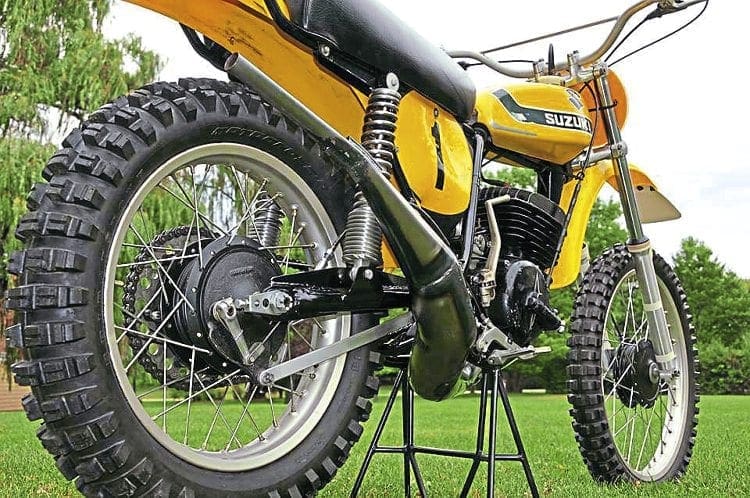
Sometimes you are looking for something and it may just be in your mind, but if you are happy you are going to do better. The Japanese guys, they had their own ideas, it was hard to communicate well with them.”
Merv also had the greatest respect for Roger DeCoster and Gerrit Wolsink. His oldest daughter named her first child Gerrit, and Roger was best man at Merv’s wedding.
Merv: “Roger and Gerrit were always wonderful to work with, very helpful and perfect gentlemen. Compared to some of the prima-donnas we had on the road racing team, it was always a pleasure to work with them.
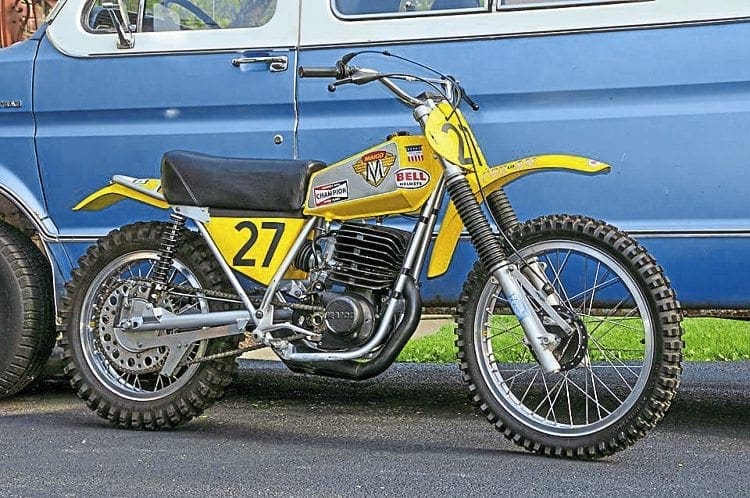
We had it in our contract with Barry Sheene that he was to wear Suzuki clothing at the track, and we were forever in arguments or issuing fines because of the Gary Nixon shirts or similar. In complete contrast, we suspected that Roger DeCoster slept in Suzuki pajamas.”
Willy Bauer had swept the Czech GP on the new long travel Maico, which was the race before the USGP. Bauer then won the first moto at Carlsbad to draw nearly even with DeCoster on points.
Maico may have enjoyed an advantage with their tractable long stroke, long suspension travel 400s (or sometimes 450s), yet in the second moto of the 1973 USGP, there was something that ran entirely off-script.
American 250cc National Champion Gary Jones on the prototype 450 Elsinore got a massive holeshot giving Honda its first ever 500cc MX race lead. The bike was retired soon after, the cause for the withdrawal from the race was hidden from the public.
Gary Jones: “It was a one-off prototype from Japan… a crappy frame is what it was, like it was made out of butter. We pulled it into the pits and threw a blanket over it so that nobody would see that the frame had broken, it was the first open bike that they’d ever had.”
It was only a few laps before the normal order of things was restored and Willy Bauer’s Maico was in the lead, followed home by team-mate Gerrit Wolsink. It was also the greatest day for Cheney in motocross, with John Banks finishing third overall on the day with the Cheney-BSA.
The Maico dominance continued with Bauer winning three of the next four motos in West Germany and at Namur, Belgium. However DeCoster’s modifications to the Suzuki were beginning to pay off and at the final round, the Dutch Grand Prix, DeCoster’s pair of fourth places moved him two points ahead due to Bauer’s mechanical breakdown.
Roger DeCoster had won his third GP World Championship in a row. Once again, Maico had been the eternal bridesmaid. Ironically it was former Maico rider Ake Johnsson who had the most success in the last two races, too little too late for the Swede with his heavily modified Yamaha. He had won three of the last four motos, but finished fourth in points behind the other Yamaha of van Velthovan.
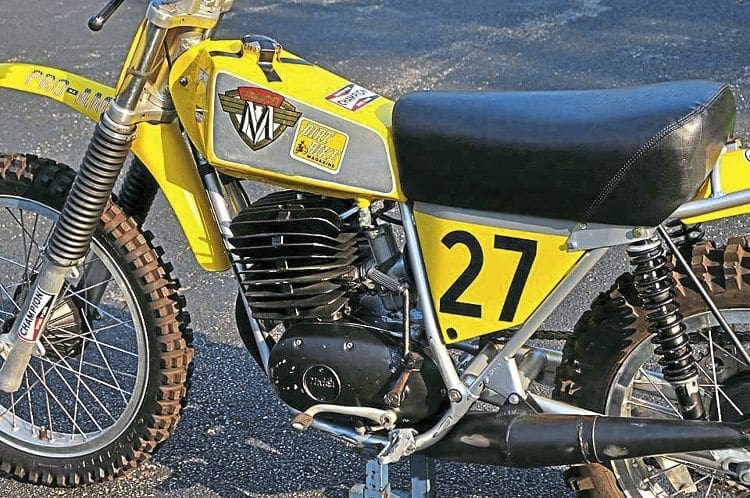
Gerrit Wolsink had won the final moto of the year for Maico, his goodbye to the team on his way to Suzuki for the following six seasons and unmatched success at the Carlsbad USGP, the overall winner in 1974/75/76/77 and 79.
Tragedy was to stalk many of the other greats from that 1973 season. In 1978 Willy Bauer crashed in the British 250 Grand Prix and was paralysed due to a spinal cord injury. Roger DeCoster had a horrific practice crash preseason in 1978 where he lost his spleen and nearly died.
He came back from this injury to compete three more seasons and won the final Grand Prix he contested, the 1980 Luxembourg GP. Between 1971 and 1977 DeCoster had won the World Championship five times, finishing second in the other two years.
Wolsink returned to his roots for the 1980 season: “I came back in 1980 on Maico and it was a disaster. The engine wasn’t good enough, they missed the reed valve and the frame was terrible.
They promised everything but it was a bad year, you know. It was really bad to drive on. I switched to Honda in 1981, Honda was very good then and I got a little support from the factory and then I got second again in 1981 on the Honda.
“I was too old after that and so I quit. 1980 was Roger’s last year at Honda, and he won his last GP riding for them. Roger did all the development.”
As with 1973, history repeated itself for Wolsink in 1980 as he signed on to a team where DeCoster had worked his magic the previous season. It must be nice to have Roger as your development rider.
Gerrit: “Oh yeah, and that’s why Roger is so successful now as a team manager as with KTM they give him the freedom to make things and that’s where he collided with Suzuki all the time. With KTM he gets a free hand and look at what they are doing now.”




